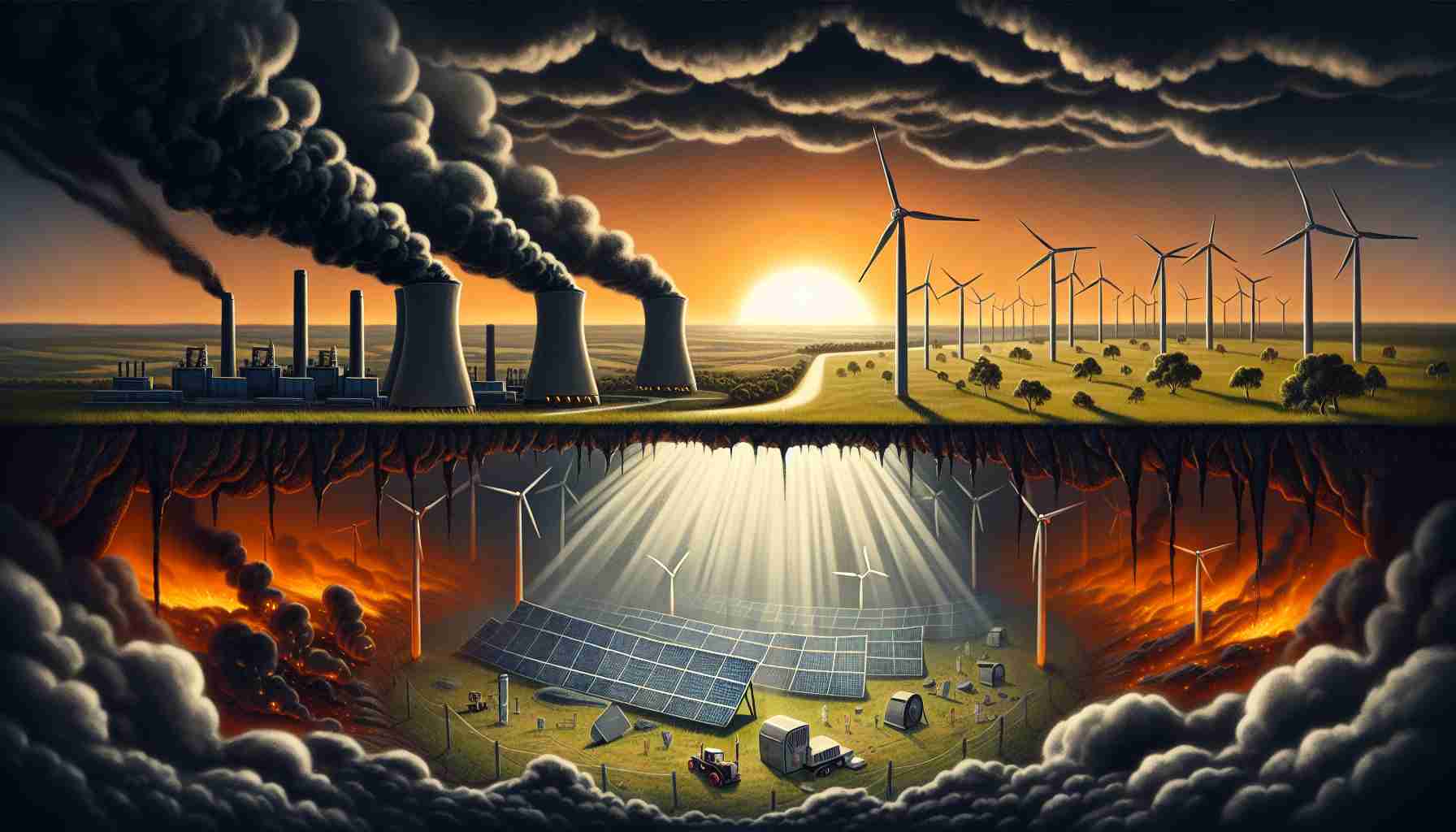Australia is witnessing a significant energy crisis as over half of its coal-fired power generators age beyond 40 years, signaling an urgent need for change. A recent analysis reveals that outages from these old coal plants are the key contributors to frequent power shortages, especially during the scorching summer months.
As generators become less dependable, they have increasingly been linked to shocking spikes in electricity prices across the eastern seaboard. Notable incidents include outages at the Yallourn coal power station in Victoria and the Callide plant in Queensland, which triggered substantial price increases.
The analysis suggests that these aging plants only generate about 65% of their potential compared to younger facilities, which manage to contribute roughly 81% to the energy market. With most coal-fired generators set to close by 2035, experts assert that Australia must pivot towards renewable energy sources to ensure a stable electricity supply.
The Climate Change Authority emphasizes the urgency for renewable infrastructure development to meet the rising demand, fueled by population growth and technological advancements. Alternative solutions, such as gas peaking plants, may fill the gap during periods of high energy demand.
In conclusion, with the intersection of aging coal infrastructure and an increasing need for reliable energy, Australia’s future hinges on a rapid transition to sustainable and renewable energy sources.
The Broader Implications of Australia’s Energy Crisis
Australia’s pressing energy crisis transcends its borders, potentially shaping the global energy narrative. The decline of coal-fired power plants not only affects local economies but is indicative of a worldwide shift away from fossil fuels. As these aging infrastructures falter, the immediate impact is felt through rising electricity costs, which can stifle economic growth. High energy prices disproportionately affect lower-income households, exacerbating social inequalities and creating broader economic instability.
Culturally, the reliance on outdated coal technologies clashes with a growing societal demand for sustainability and responsible environmental stewardship. As Australians increasingly embrace a green future, the inertia of aging coal plants could create a backlash against traditional energy policies, pushing society toward innovative solutions in renewable energy.
Environmentally, the transition away from coal presents significant opportunities, as Australia could lead in global efforts to combat climate change through enhanced renewable infrastructure. This shift heralds potential growth in green jobs and technology, positioning Australia as a leader in the renewable sector.
In the long term, Australia’s pivot from coal may also encourage other nations to follow suit, influencing global energy markets and potentially accelerating a collective move toward sustainability. Thus, while the challenges are substantial, the corresponding movement toward renewable energy solutions stands to redefine economic relationships, social contracts, and environmental policies on a world scale.
Australia’s Energy Crisis: The Urgent Shift to Renewables
The Aging Coal Dilemma
Australia is facing a critical energy crisis, driven largely by a significant proportion of its coal-fired power generators reaching the end of their operational lives. Over 50% of these plants are now over 40 years old, raising serious concerns about their reliability and effectiveness in meeting the country’s energy demands.
The Impact of Outages
Recent analyses indicate that outages from these aging coal facilities are the primary culprits behind frequent power shortages, especially during the extreme Australian summers. The Yallourn coal power station in Victoria and the Callide power station in Queensland have been notable examples of how failures in these old plants can lead to sharp increases in electricity prices, straining consumers and businesses alike.
Efficiency Disparities
The efficiency of these old coal plants is alarmingly low, with reports showing that they only produce around 65% of their potential capacity. In contrast, more modern facilities achieve about 81%, underscoring the need for a transformation in Australia’s energy generation strategy.
The Future of Coal Generation
As most coal-fired generators are projected to retire by 2035, experts are raising urgent calls for a shift towards renewable energy sources. The Climate Change Authority advocates for rapid development of renewable infrastructure, emphasizing the importance of sustainable solutions to accommodate the rising energy demands stemming from population growth and technological developments.
Exploring Alternatives
In addition to renewables, there are potential alternative solutions, such as gas peaking plants, which can provide crucial backup during periods of high energy consumption. These plants could support the grid as Australia transitions away from coal.
Trends in Renewable Energy
Australia’s transition to renewable energy is not just critical for reliability; it also presents an opportunity for innovation and job creation in the renewable sector. Solar and wind energy projects are already on the rise, reflecting a shift in public and governmental attitudes towards sustainable energy solutions.
Market Analysis
The current energy crisis has sparked discussions across various sectors regarding the feasibility and urgency of transitioning to cleaner energy sources. A blend of public policy, private investment, and community initiatives will likely shape the future energy landscape in Australia.
Conclusion
Australia’s future energy stability hinges on a swift transition from aging coal infrastructure to modern, renewable energy sources. The combined pressures of aging facilities and rising demand underscore the urgent need for change in the energy sector, paving the way for a more sustainable and resilient energy future.
For more in-depth insights and updates on Australia’s energy evolution, visit Energy.gov.au.
